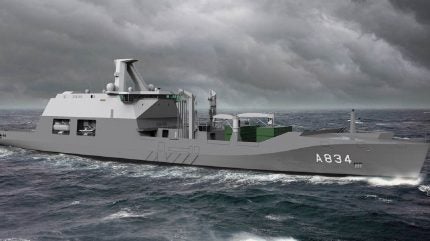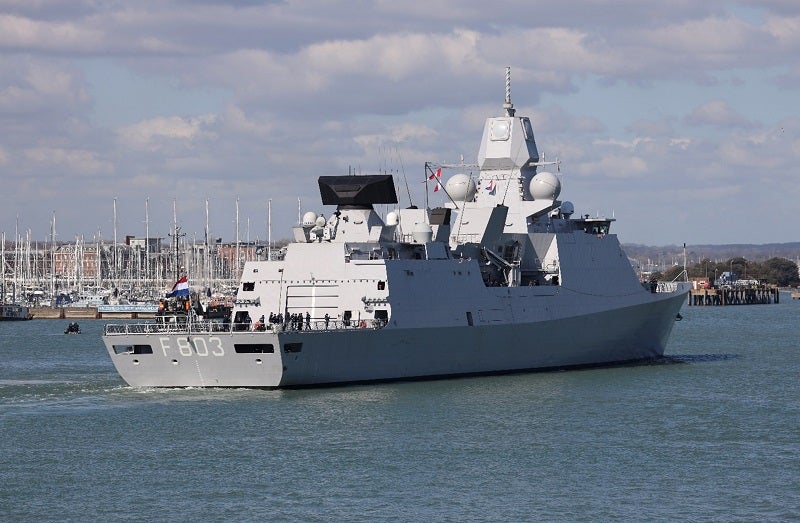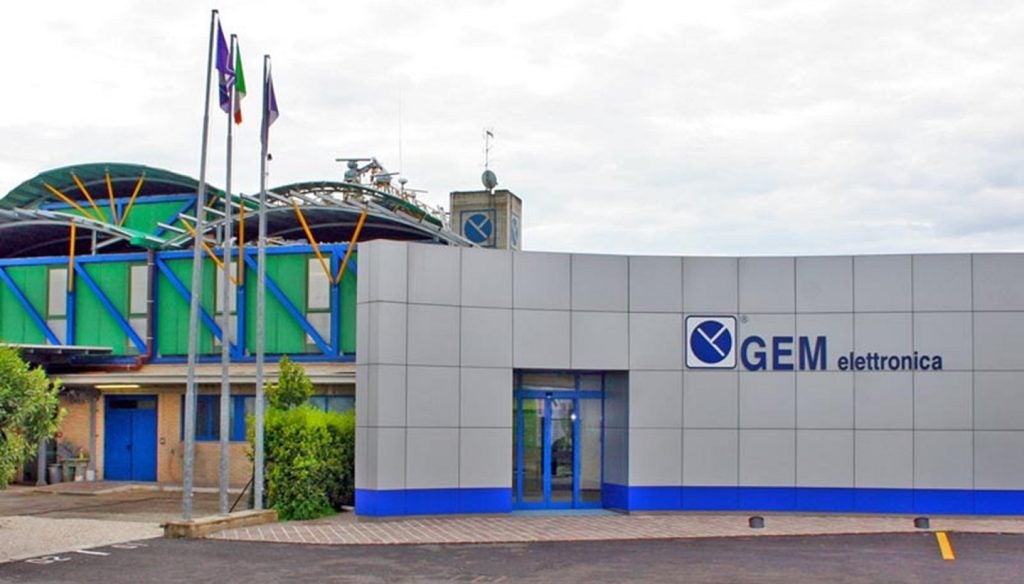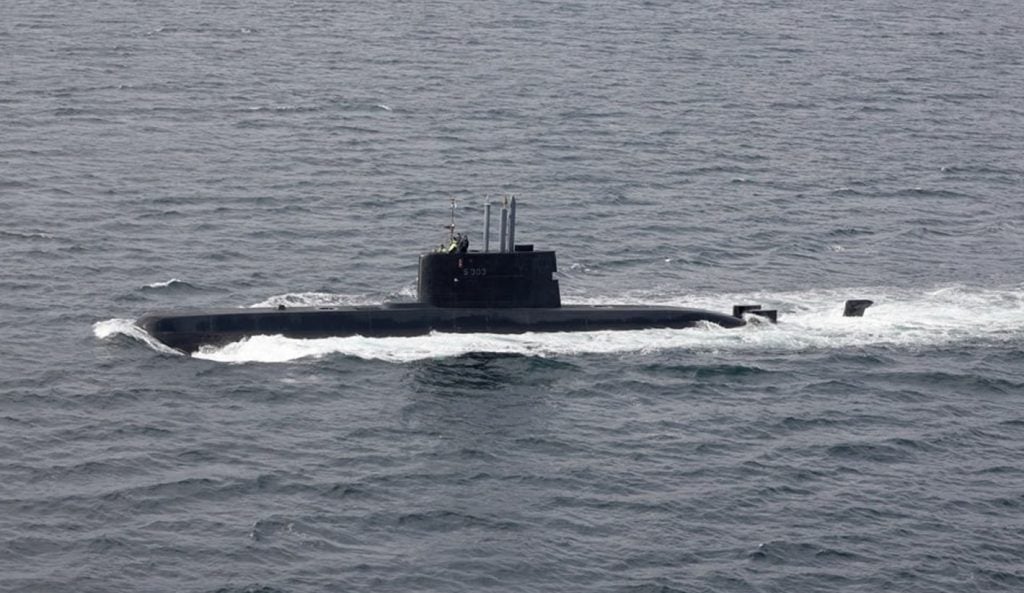
The Royal Netherlands Navy anticipates the delivery of its single Combat Support Ship (CSS), HNLMS Den Helder, in a matter of months.
As part of the country’s plan to transform all the ships in its fleet over the next 15 years – a goal worth several billion euros – the CSS will be one of the first surface combatants to breathe new life into an ageing service.
Den Helder will arrive in the Netherlands from Romania, where the prime contractor Damen Schelde is building the new auxiliary fleet. Meanwhile the final outfitting will take place in the town of the flagship’s namesake, Den Helder.
The CSS project is estimated to cost €375m ($445m); it is expected to become operational in Q2 2025.
CSS features
Based on the Karel Doorman, an existing multi-function support ship that entered service in 2015, the vessel will have the capability to operate in high threat situations when protected by frigates. It can also be used to prevent drug trafficking, control refugee flows and support emergency aid missions.
The Dutch Government announced the procurement decision in December 2019. Damen signed a contract with the Defence Material Organisation for the construction of Den Helder in February 2020.
How well do you really know your competitors?
Access the most comprehensive Company Profiles on the market, powered by GlobalData. Save hours of research. Gain competitive edge.

Thank you!
Your download email will arrive shortly
Not ready to buy yet? Download a free sample
We are confident about the unique quality of our Company Profiles. However, we want you to make the most beneficial decision for your business, so we offer a free sample that you can download by submitting the below form
By GlobalDataJust over a year ago, Damen announced through social media that it had moved the vessel from a drydock to water for the first time after the installation of the main ship’s mast.
CSS will measure approximately 180 metres long and will have a displacement of 22,400 tonnes. It will mainly supply fuel, ammunition and goods to other naval vessels at sea.
The vessel will have the capacity to accommodate a total of 150 personnel, with 75 crew members and 75 additional people on board. She will also offer space to house two helicopters and up to 25 containers on the upper deck.
In September 2020, Damen also signed a contract with Facet Netherlands for the supply of a helicopter refuelling system for the vessel.
Dutch pressure to deliver a new fleet
While the delivery of the CSS replenishment oiler marks the start of the Navy’s renewal, there is still growing pressure for the service to deliver the renewal plan on time.
The Dutch Ministry of Defence will still need to sustain its four Walrus-class submarines, the Karel Doorman and HNLMS Johan de Witt among others until 2026 at least.
This will continue to cost the republic a considerable amount just to maintain a credible force in the interim, after which most of the new ships will have entered in the early 2030s.

This is a crucial period that requires an unprecedented level of defence commitment across the Western coalition, and the Netherlands are no exception. Earlier in June 2024, HNLMS Tromp and its on-board NH90 frigate helicopter were approached by two Chinese fighter aircraft and a helicopter. The incident took place just as the Royal Netherlands Navy was conducting a patrol in the East China Sea.
A credible maritime presence is necessary to ensure a dependable level of deterrence and thus security.





